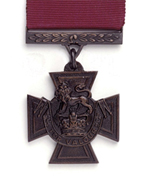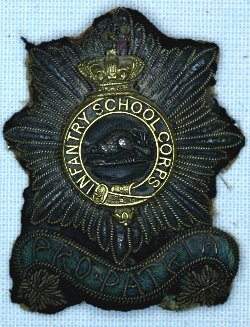Topic: Canadian Army

A portion of the private married quarters built at Canadian Forces Base Petawawa.
Google Maps image.
Our "Garrison Towns"
Ottawa Citizen, 19 May 1949
By Dick Sanburn
Permanent Military Communities a new feature of Canada's life
There's a new kind of military tradition growing in Canada. It's something Britain has had since the days of the Romans, but it's a new feature of Canadian service life, a feature which grows out of Canada's maturity as a world power of consequence. The new tradition is based on the appearance, all across the country of what may be loosely termed "garrison towns," where the military is predominant.
For many years Britain has had its Aldershot, Bramshot, Camberley, Colchester and Catterick, and many more. Today, new but growing, Canada has its Borden, its Rivers and Shilo in Manitoba, its Petawawa, Fort Churchill, Ralston, Alta., Kingston, Esquimalt, Halifax and others.
In all these places permanent military communities are growing up, and that means real communities and not just strict military establishments of soldiers. In all of then there are the wives and children of the men iin uniform, officers, NCOs, and other ranks. The number of these family units is growing steadily as the government provides more and more of its highly attractive married quarters, both excellent houses and first-class apartments. Such accommodation already runs well up into the thousands.
In the new military communities, there are schools and churches, shopping centers, theatres, such amenities as bus service around the post or into nearby towns. There are clubs, ordinary community activities, even "mayors" and councils.
The interesting and significant thing about this development is the effect it probably will have on the service traditions. More than ever before, there will be traditional "military families." There are always such families, where son follows father and grandfather in a service career, but it seems completely natural that the trend will grow now more than ever before.
Here you will have hundreds, then thousands, of children born to military fathers in a military community, the children of mothers whose life has a long background of following father from one busy military community to another all across the country.
From the day it is born, the child lives in a military atmosphere. Uniforms, brass polishing, parades. Military jargon, all become as normal a part of a child's life as ice cream cones, movies and mud pies are to a civilian child. What more natural than that a son grows up wanting to be a soldier like his father, or that the daughter, knowing military men from infancy, would tend to marry a military man? Even now wives of serving soldiers tend to say "Gee, I wish we could get posted to Winnipeg (or Calgary, or Borden, or Chilliwack). There's a grand community at Fort Osborne there, and remember that nice Sergeant Doakes and his wife, Marj?"
Many of these new communities have their own newspapers, and the movement of families from one post to another are carefully recorded, and letters to the editor keep the big military family informed of what their friends are doing and where they are.
There may be rabid anti-militarists who will howl in anguish at this thought. It might shock them to visit one of these communities and see how pleasant they are, and how happy people can be in a military family.
Canada is growing up. This growth of a new military tradition is just one more of the signs of natural maturity.








 These were the questions I asked
These were the questions I asked  Back came the mugs. And lo and behold there was one suitably engraves for " Lt. J.G. Smithers." The joke was on someone. But it was too good to let it pass. And so the mug of Lt. Smithers remains behind the bar with the rest. And each visitor gets to have drink from this tankard first of all whether it is milk or something a little more appealing. He hears the story of how the officers presented the mugs and a little about each officer. Sooner or later he is bound to ask about the officer whose tankard he has borrowed. And it is then that he hears the story of Lt. J.G. Smithers, the ghost officer of the Royal Canadian Dragoons who never served, who never will be, and who really doesn't exist, yet is a tradition in the regiment.
Back came the mugs. And lo and behold there was one suitably engraves for " Lt. J.G. Smithers." The joke was on someone. But it was too good to let it pass. And so the mug of Lt. Smithers remains behind the bar with the rest. And each visitor gets to have drink from this tankard first of all whether it is milk or something a little more appealing. He hears the story of how the officers presented the mugs and a little about each officer. Sooner or later he is bound to ask about the officer whose tankard he has borrowed. And it is then that he hears the story of Lt. J.G. Smithers, the ghost officer of the Royal Canadian Dragoons who never served, who never will be, and who really doesn't exist, yet is a tradition in the regiment.
 3. Metal Badges of Rank—Officers
3. Metal Badges of Rank—Officers




 Canadian Bravery Decorations
Canadian Bravery Decorations




 Lord Ashcroft's VCs
Lord Ashcroft's VCs Follow Lord Ashcroft on Twitter
Follow Lord Ashcroft on Twitter







 The Albert Medal was authorized by her Majesty Queen Victoria on 12 March, 1866, and
The Albert Medal was authorized by her Majesty Queen Victoria on 12 March, 1866, and 
 Never a word of a lie in it!
Never a word of a lie in it!

